For more detailed information on the individual projects follow the links.
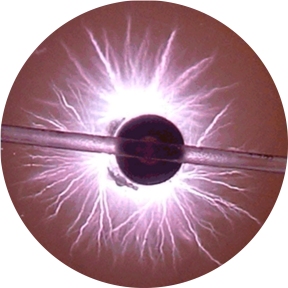 |
Plasma-Liquid Processes
Discharges for Pollutant Degradation, Chemical Synthesis, and Biomass Processing
Electrical discharges in and with liquids and especially for water are known to provide different reaction mechanisms, such as the generation of short-lived
reactive species, that can efficiently be exploited for the degradation of microorganisms, recalcitrant chemical compounds and biomass in general. In organic
liquids or specific aqueous solutions also new materials can be synthesized or material properties be modified. For high voltage insulation and switching applications
in particular discharge phenomena and development are of great interest. In our research we investigate both the physics of electrical breakdown in liquids and possible applications.
More... |
|
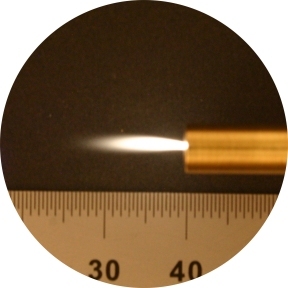 |
Plasma Decontamination
Degradation of Microorganisms and Chemical Compounds
Our research is focusing on the mechanisms that are responsible for the inactivation of microorgansism and pollutants in air and on surfaces, including skin.
The main focus are possible applications for the elimination of pathogens in air, exhaust gas streams and on surfaces, such as medical devices. The complexity
of the plasma, which meets complex biological and chemical targets in often very specific settings, entails a manifold of possible interactions and synergies.
Accordingly, we have combined the expertise of biologists, physicists and engineers to study plasma parameters, plasma chemistry and biochemistry to develop different
solutions for specific problems
More... |
|
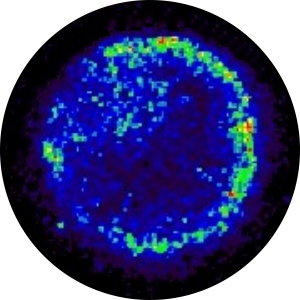 |
Electrical Stimulation of Cells and Tissues
Biological Responses to Electric Fields and Non-thermal Plasma
The first, immediate response of cells to the exposure by a plasma is driven by physical processes that are induced by charged species and electric fields.
The latter are of particular interest also for the application on pulsed electric fields (not necessarily together with plasma) that are known to disrupt
cell membranes and instigate subcellular processes, such as apoptosis. The objective of our research is the investigation of immediate biophysical mechanisms
with respect to the induced biochemical and eventually biological responses. The often fast and brief mechanisms require diagnostic tools with temporal resolution
shorter than the exposure, e.g. nanoseconds, and spatial resolutions comparable to the exposed object, e.g. single cells.
More... |
|
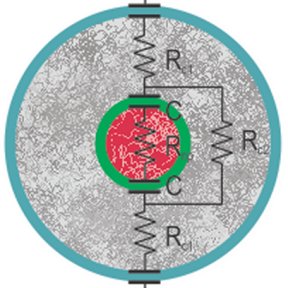 |
Dielectric Spectroscopy
Electrical Properties of Cells, Tissues and Materials 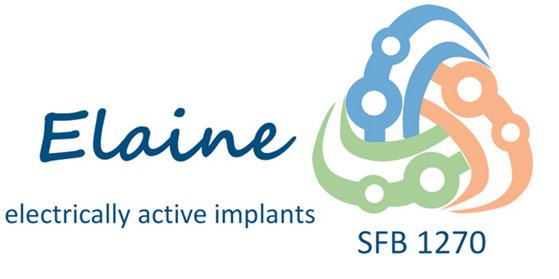 Dielectric properties of cells, i.e. the distribution of capacities and impedances, are crucial for a quantitative description of its interaction with electric stimuli.
Accordingly, measurements and analysis of dielectric properties can describe or even predict cell-specific responses. Conversely, monitoring dielectric parameters
after exposure of cells to electrical stimuli can reveal changes to cell morphologies, membrane structures and specific cell functions. Originally intended for the study
of nanosecond pulsed electric field exposures, the topic has in the meantime become crucial for the investigation of other electrical stimuli as they are pursued by the Collaborative
Research Centre 1270 Elaine on electrically active implants - funded by the German Science Foundation (DFG).
Dielectric properties of cells, i.e. the distribution of capacities and impedances, are crucial for a quantitative description of its interaction with electric stimuli.
Accordingly, measurements and analysis of dielectric properties can describe or even predict cell-specific responses. Conversely, monitoring dielectric parameters
after exposure of cells to electrical stimuli can reveal changes to cell morphologies, membrane structures and specific cell functions. Originally intended for the study
of nanosecond pulsed electric field exposures, the topic has in the meantime become crucial for the investigation of other electrical stimuli as they are pursued by the Collaborative
Research Centre 1270 Elaine on electrically active implants - funded by the German Science Foundation (DFG).
More... |
|
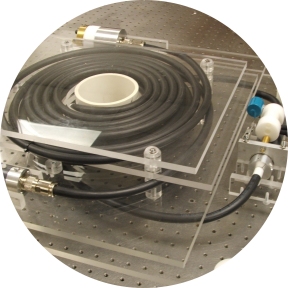 |
Pulsed Power Engineering
Science and Technology of Short Electrical Pulses
The generation of discharges in water and the design of systems for exposures of cells and tissues to ultrahsort high voltage pulses,
requires a unique skill set known as Pulsed Power Engineering. With respect to application and the characteristic of the sample that needs to be exposed we
design generators, develop diagnostic methods, analyze and evaluate exposure conditions. We also study the changes of materials and material properties under
the often extreme conditions.
More... |
|